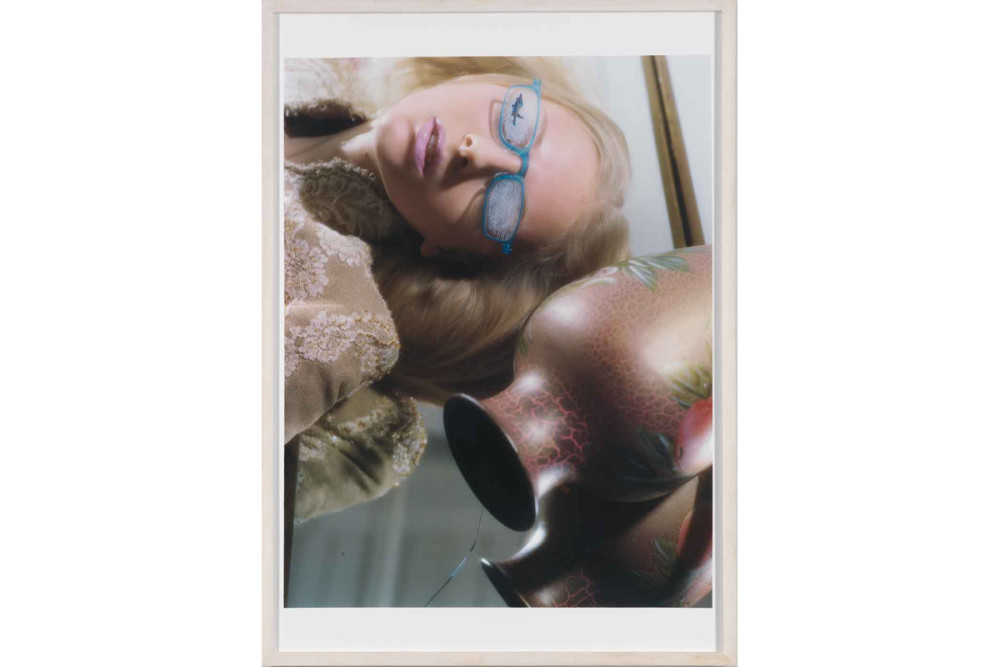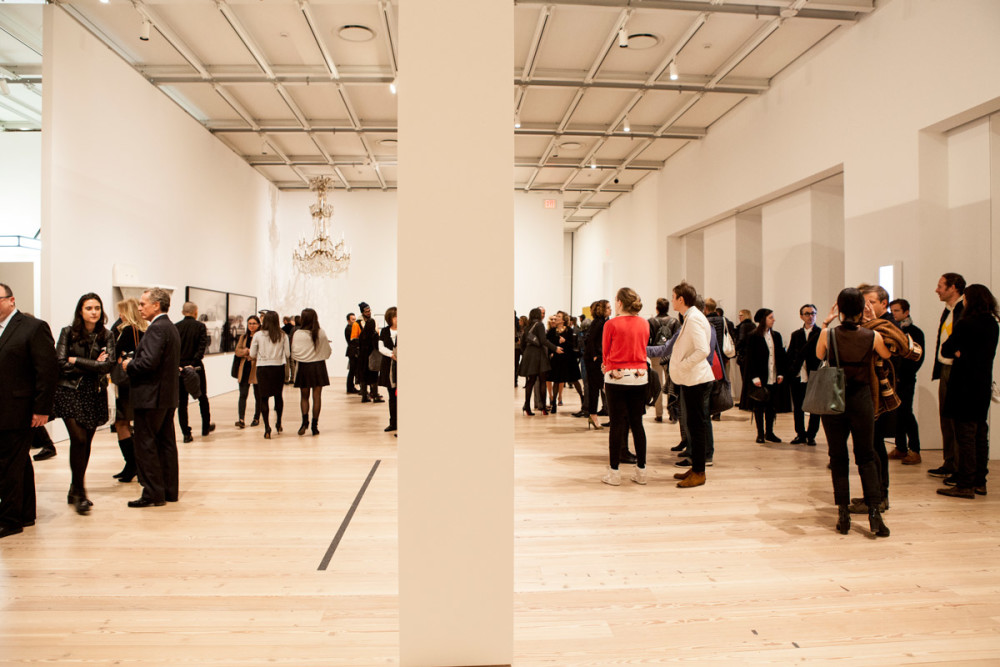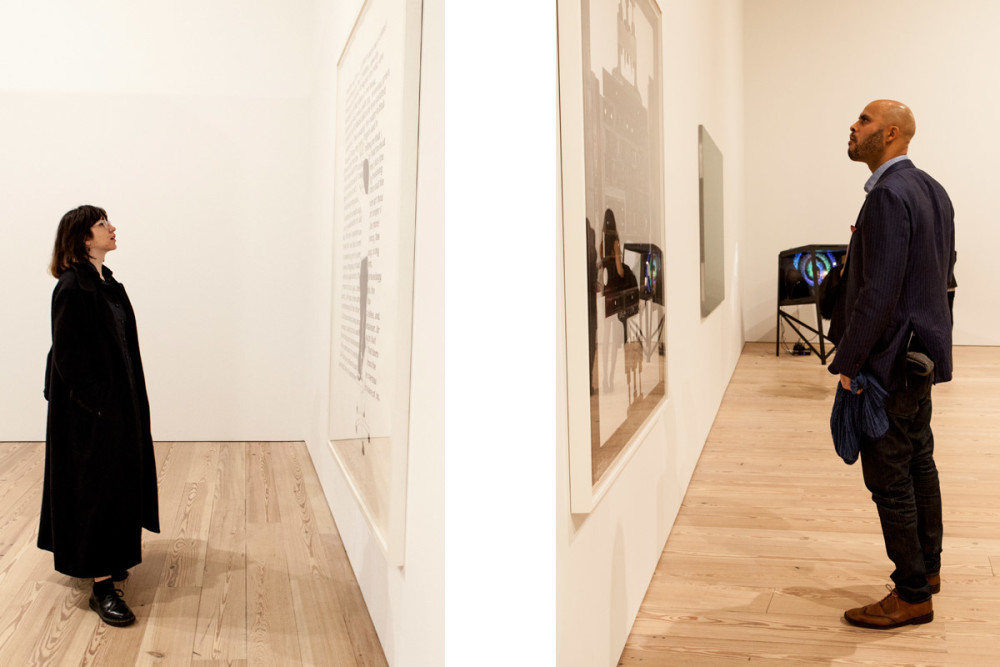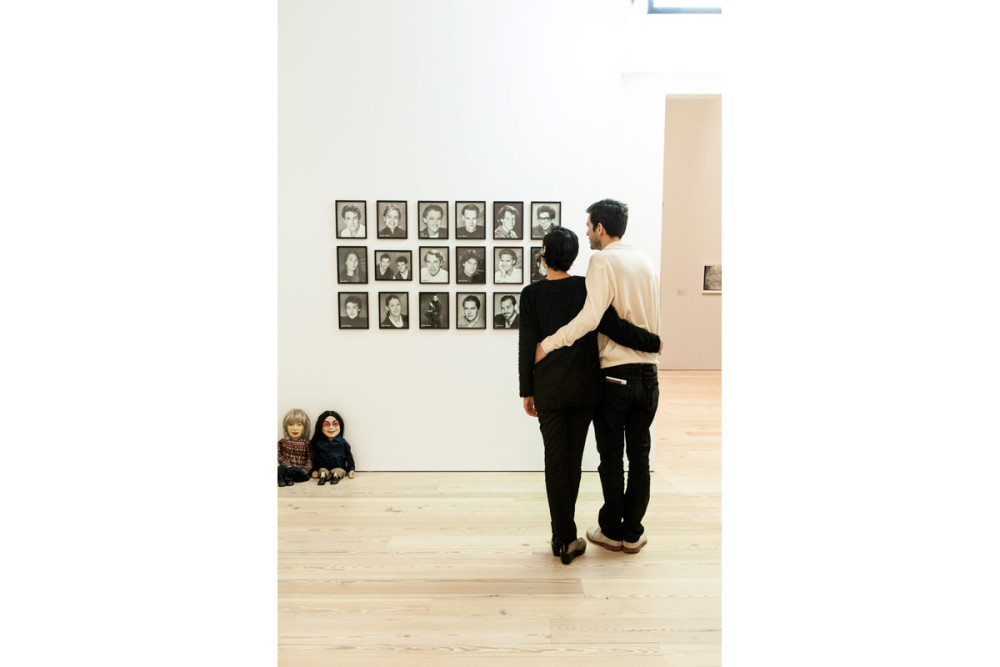Image above: Richard Prince, Untitled (Cowboy), 1980–84. Chromogenic print: sheet and image, 43 5/8 x 29 3/8 (110.8 x 74.6). Edition no. 2/2 Promised gift of Thea Westreich Wagner and Ethan Wagner P.2011.328. © Richard Prince
The exhibition, Collected by Thea Westreich Wagner and Ethan Wagner, which will be on view at the Whitney Museum of American Art until March 6th, is comprised of 800 pieces by both international and American artists from the 1960s to the present. The collection includes works exploring various mediums; from photographs and prints, to sculptures and puppets.

Image above: Bernadette Corporation, Creation of a False Feeling, 2000. Inkjet print: sheet, 70 1/2 x 49 13/16 (179.1 x 126.5); image, 60 11/16 x 47 1/16 (154.1 x 119.5) Promised gift of Thea Westreich Wagner and Ethan Wagner P.2014.10. Courtesy of Greene Naftali Gallery. © Bernadette Corporation
Though it is difficult to identify a singular theme that unites all these pieces, one question that seems to continually resurface throughout the exhibit is, ‘What makes an object art?’, or more simply: ‘What is art?’ Walking through the exhibit, Tony Conrad’s Yellow Movie demands onlookers’ attention through its simplistic projection of a painted black rectangle on an oversized unframed piece of canvas. The work mimics a television or a movie screen in its form, as though to nudge us to question, ‘Does placing a frame around an object automatically turn it into a work of art?’ William de Rooji’s Bouquet III, which showcases a simple arrangement of live flowers in a vase, also attempts to chip away at this subject by addressing an idea that stretches back to Ancient Greece: that of nature being art. We find ourselves wondering, is nature art in itself or does all artistic value lie in our treatment and modification of it?

Image above: During the opening at the Whitney Museum. © Paula Morandarte
Another element that binds the artists in the collection together, is their portrayal of art as a process rather an eternal, perfect, and complete phenomenon. The innovative perspective of art theory is best showcased in Michael Krebber’s presentation of Les bisch ja nich in stich, a canvas stroked with sporadic ribbons of paint. Their sparsity gives the viewer a feeling of incompleteness, forcing us to meditate upon what it is that makes an artwork ‘complete’. Is it complete once the canvas is covered entirely or only at the moment at which the artist declares that it is finished?

Images above: During the opening at the Whitney Museum. © Paula Morandarte
Eileen Quinlan’s Failed Portrait functions in a similar way to Krebber’s painting, in that it challenges the importance that we constantly place on the “finished artistic product”. We fail to see art as a process that requires multiple trials and errors, but Quinlan’s failed portrait of smudged silvers reminds us of the often painstaking process that is involved in creating an art. Artworks are not eternally existing objects separate from the labor of humanity, and just like anything else man-made, they are prone to error and miscalculation.

Image above: During the opening at the Whitney Museum. © Paula Morandarte
Featuring precious pieces such as Jeff Koons’s “Poodle” and Richard Prince’s “Untitled (Cowboy)”, the collection is an exquisite and chaotic representation of some of the most important artists of our time. Of the 800 pieces on view, 500 have been gifted to the Whitney and will be added to the museum’s permanent collection. The remaining 300 works will become part of the permanent collection at the Centre Pompidou.
By Stephanie Kotsikonas

